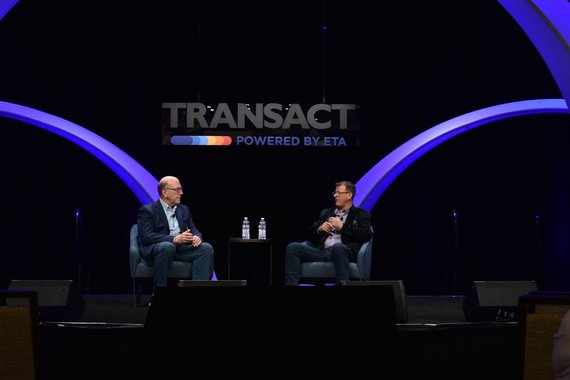
- Four minutes read
The future of affiliate marketing
Using feedback sourced from our network of affiliates, Income Access was able to identify several key trends reflecting both change and consistency within the iGaming affiliate industry.
In March, we released a survey report entitled State of Play: iGaming’s Affiliate Marketing Industry, which presents the results of an affiliate survey that concluded in Q4 2017. Using feedback sourced from our network of affiliates, Income Access was able to identify several key trends reflecting both change and consistency within the iGaming affiliate industry.
1. Mobile traffic and optimisation
An example of strategic consistency is mobile traffic and how much the industry has come to rely on innovation in this area. A resounding 86% of respondents said they have a mobile-optimised site, while 15% indicated that they also run an accompanying app. The importance of being mobile-savvy was further highlighted by the 39% of affiliates who said that more than half of their traffic came from mobile devices. This marked a 97% increase from a 2015 Mobile Acquisition Survey conducted by Income Access, in which only 20% of affiliates said that more than half of their traffic originated from a mobile device. When looking at app downloads, across all respondents currently equipped with one, 31% of apps average at least 76 new installs per month. At the other end of the spectrum, 44% of affiliates said they average 25 or fewer installs each month.
2. Target markets and verticals of focus
The survey respondents offered insight as to which established markets are likely to maintain their place as a key industry focus, and which emerging markets seem poised for growth through 2018 and beyond.
In the case of regional markets, predictably the UK and Europe were among the top selections when identifying the current markets in which affiliates operate. The UK was the clear frontrunner, with 65% of affiliates having some presence in the market. Western Europe (excluding Scandinavia) was the second-most popular market (37%). The United States (33%), Eastern Europe (25%) and Australia (25%) rounded out the top five choices.
Affiliates displayed comparable preferences when asked which markets they were most interested in pursuing through 2018. The UK was again top (43%), staying ahead of the US (33%) and Australia (22%). Africa, Latin America, Scandinavia and Eastern Europe, all recorded a current and future initiatives interest level variance of 4% or less.
Examining affiliates’ current promotional focuses for verticals, long-standing leaders held strong and up-and-comers made their presence felt. The ‘big four’ of Casino (75%), Sportsbook (42%), Bingo (40%), and Poker (38%) continue to lead the way; Lottery, the next most popular choice, was selected by 15% of affiliates.
Financial, US regulated gaming (casino and poker) and Social Gaming, each appeared in 11% of affiliates’ current strategies, but received a marked uptick when affiliates were asked about future promotional considerations for verticals. US regulated gaming was level with Bingo as the fourth most popular option at 27%, while Financial (19%), Social Gaming (21%), Lottery (21%) and eSports (25%) all had strong results. Casino (44%), Sportsbook (36%) and Poker (31%) filled the top slots for future promotional focuses.
3. Promotional focuses and marketing activities
When asked to describe their promotional focuses, 77% of affiliates selected content (e.g. site reviews, news etc.) as a key strategy. Incorporating banner adverts with sign-up offers was the second most popular choice (55%).
Leveraging social media accounts with trackable links to operator sites currently holds varying levels of interest for affiliates. Twitter (30%) and Facebook (28%) remain firmly as the top preferences when it comes to channels, while YouTube (19%) and Instagram (11%) have fewer proponents.
Looking at social media in more general terms, Facebook (79%) was the most popular overall channel at the time of the survey, followed by Twitter (66%), YouTube (36%) and Instagram (21%).
Instagram (28%) had the distinction of being the only social media channel to have more affiliates select it as a bigger focus for 2018 than it was at the time of the survey. Facebook (62%) and Twitter (49%) were again the top two selections for focus in 2018, with YouTube (23%) fourth.
4. Partnership questions and advertising models
In addition to promotional focuses and marketing initiatives, our survey sought to gain insight on affiliates’ partnership preferences with merchants and the brands they promote. To explore this, we asked affiliates what their most important questions were for prospective partners.
30% of respondents indicated that compensation schemes were a major factor in partnering with a brand. A brand’s profile in the industry was also selected as a key factor (24%) as well as being optimised for mobile (15%). Far fewer affiliates selected a focus on gamification (2%) or predictive learning (4%) as influencing factors.
Reflecting the diverse set of considerations prior to entering a partnership, 19% of affiliates provided separate write-in responses that covered a range of topics. Most of these concerned the conversion rate of promotional offers, reliability of payments, investing in relationships, and the long-term outlook for the brand itself.
Revenue share (77%) was the overwhelming leader for advertising models on which affiliates currently earn commissions. CPA (43%) and hybrid (i.e. revenue share + CPA) (38%) also proved to be popular partnership models, with flat fee/preferred placement ads (19%) rounding out the top four selections.When comparing these results to a survey Income Access conducted in 2016, we found that CPA (42%) had the most consistent year-on-year results, while revenue share (92%) and hybrid (58%) each dropped considerably. Based on our 2017 survey, these differences can be partly explained by an increasingly diverse set of models, which includes media buy deals, cost-per-click and cost-per-install.
Identifying their preferred advertising models, revenue share (55%) was the most popular method with affiliates. Hybrid (30%) and CPA (19%) each received a decidedly smaller level of interest than the percentage of affiliates currently working under that commission model.
Conclusion
Through the survey, we were able to corroborate some of our working theories and uncover previous unknowns. While mobile has been at the top of affiliates’ priority lists for years, it’s nonetheless impressive to see just how omnipresent it has become. The same applies to the “big four” of casino, sportsbook, poker and bingo, which have proven to have varying levels of staying power. One example of an unexpected but welcome result was the 25% of respondents who said they are considering promoting eSports in the future.
We anticipate 2018 being an eventful year in iGaming and one in which a new set of questions will come to the fore, concerning emerging markets, evolving regulatory landscapes and the technology used to navigate new challenges and opportunities.
For more information visit www.incomeaccess.com.
This article is an extract from the article Behind the numbers: Delving deep into affiliate marketing, published in the April 2018 issue of Trafficology.



